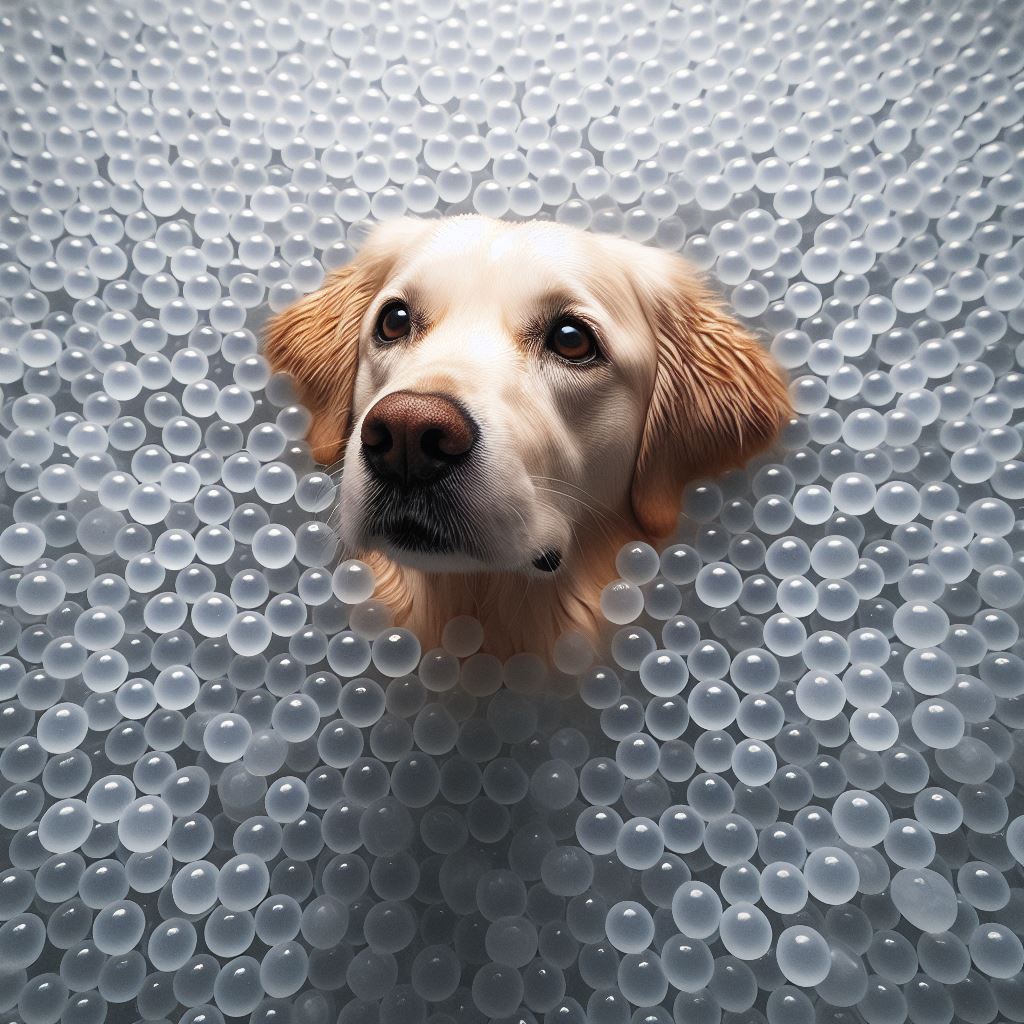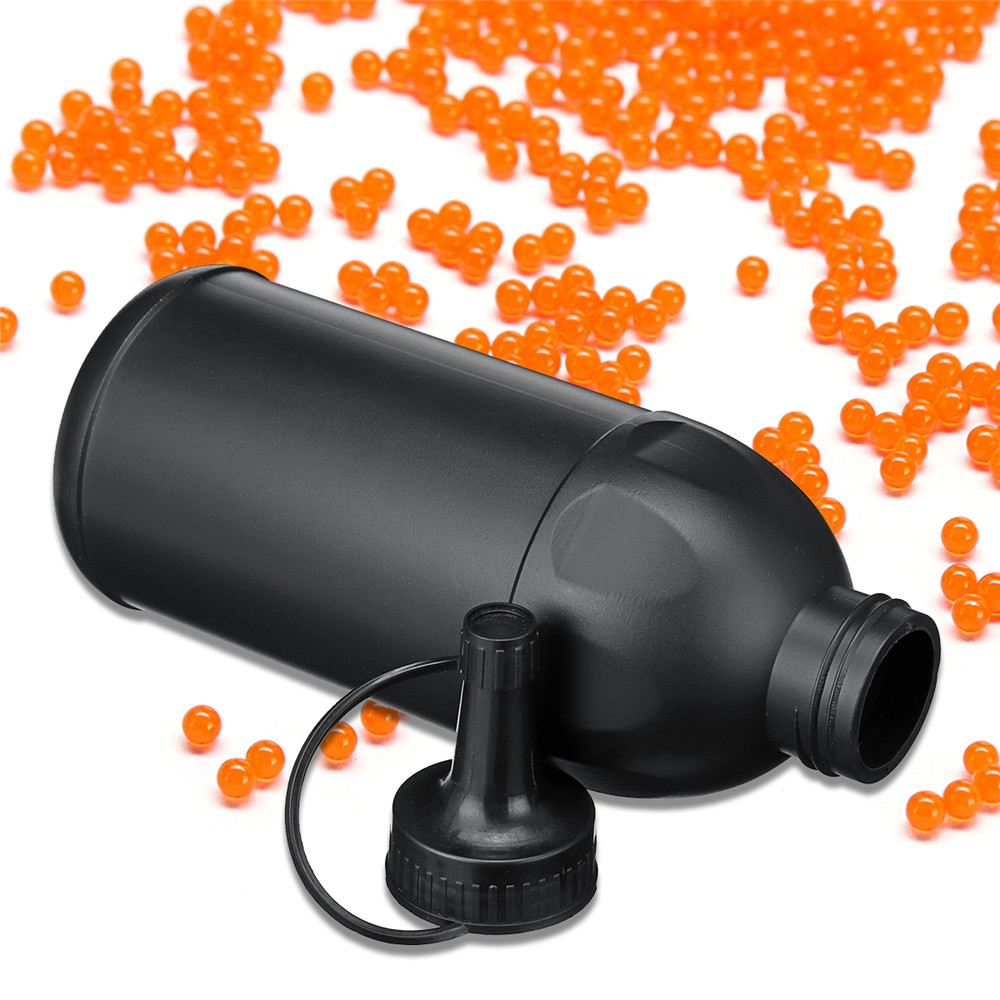are gel blaster balls toxic to dogs?

Even though gel blaster balls are touted as non-toxic, dogs shouldn't use them.
The tiny size of the balls makes them choking hazards even if the substance itself may not be toxic.
Digestive issues may also result from ingestion.
For the safety of your pets, keep gel blaster balls out of their reach.
Introduction
Because gel blaster shoot soft gel balls and are safe, gel blaster guns have become more popular as recreational toys.
Pet owners have expressed worries regarding the possible risks gel blaster balls pose to dogs, even though they are generally regarded as safe for human use.
This article investigates the safety measures pet owners should take and whether gel blaster balls are hazardous to dogs.
Understanding Gel Blaster Balls
Gel blaster balls, also known as gel beads or gel balls, are small, spherical water beads that expand when soaked in water.
These balls are made from a superabsorbent polymer that can hold large amounts of water, giving them their characteristic soft and squishy texture.
Gel blaster balls are commonly used as ammunition in gel blaster guns, which shoot them at targets for recreational purposes.
Composition and Safety
Sodium polyacrylate, a substance frequently found in disposable diapers and other home goods, is one of the non-toxic compounds used to make gel blaster balls. Though the components might be regarded as safe in and of themselves, problems occur when dogs inadvertently or purposely consume these gel balls.
Can Gel Balls Be Eaten by Your Dog?
Dogs can chew or even swallow soft, water-filled gel blaster balls, even though they're not edible. Dogs can, in theory, eat gel balls, but that doesn't mean they should. Even though your dog thinks the water beads are edible, eating them might still be harmful.
In order to keep your canine companion from consuming gel balls, you should not even store any gellets in areas the dog can reach. Later in this post, I'll go into more depth about it. Let's investigate the substance of those gel beads in greater detail now.
Potential Risks to Dogs
The potential of ingesting is one of the main issues with gel blaster balls and dogs. These vibrant, squishy balls could be mistaken for toys or food by dogs, particularly curious breeds and puppies, which could result in unintentional ingestion. The health of a dog that swallows a gel blaster ball is at risk in a several ways.
- Intestinal Blockage: The superabsorbent nature of gel blaster balls means that they can expand significantly when ingested. If a dog swallows these balls, they may swell in the dog's digestive tract, potentially causing a blockage. Intestinal blockages are serious medical emergencies that require immediate veterinary attention and can be life-threatening if left untreated.
- Choking Hazard: Even if the gel blaster balls don't cause a blockage, they can still pose a choking hazard to dogs, especially smaller breeds or those prone to gulping down objects. If a dog tries to swallow a gel ball that is too large, it may become lodged in their throat, obstructing their airway and leading to choking.
- Dehydration: Ingesting these balls without enough water can potentially lead to dehydration in dogs, as the balls may absorb moisture from the digestive system.
- Toxicity Concerns: While the materials used to make gel blaster balls are generally considered non-toxic, there is still some debate about the potential risks of ingestion, particularly in larger quantities. Some gel blaster balls may contain dyes or other additives that could be harmful if ingested in significant amounts. Additionally, if a gel blaster ball has been exposed to dirt, chemicals, or other contaminants, it could pose a greater risk of toxicity to dogs.
Precautions for Pet Owners
To minimize the risks associated with gel blaster balls and dogs, pet owners should take the following precautions:
Store Gel Blaster Balls Securely

Keep gel blaster balls out of reach of dogs and other pets in a secure container or storage area. Store them in a location where pets cannot access them, such as a locked cabinet or high shelf.
Supervise Playtime
If using gel blaster guns or allowing children to play with gel blaster balls, supervise pets closely to prevent them from ingesting the balls accidentally. Consider using barriers or gates to separate pets from areas where gel blaster balls are being used.
Train and Supervise Dogs
Train dogs to leave unfamiliar objects alone and discourage them from picking up or mouthing gel blaster balls. Supervise dogs during outdoor playtime to prevent them from finding and ingesting stray gel balls.
Dogs' Intestinal Blockage Symptoms
If your dog consumes gel beads and their packaging, you might observe the following signs:
- The diarrhea
- throwing up
- Constipation
- Deficiency
- Sluggishness
- appetite decline
- Lack of water
- bloating and pain in the abdomen
If your dog exhibits any of these signs, give the veterinarian a call right once. A medical emergency has occurred. Determine the number of gel bead packets your dog has consumed. The vet can benefit from this information.

The location of the lodged gel bead packet determines the course of treatment for an obstructed intestine. The veterinarian might attempt to remove the package with an endoscopic surgery if it is in the stomach. However, your pet might need immediate abdominal surgery if the packets are located lower in the gut. The goal of the procedure is to remove the packet(s) and, at the same time, restore any intestinal tissue damage.
Recall that if an intestinal blockage is not treated, it might be fatal. Therefore, if your dog exhibits any of the aforementioned symptoms or if you witness your dog eating gel packets, you should always contact a veterinarian.
My dog ate gel blaster beads
This situation is unlikely to pose any serious toxicity concerns. The amount ingested is not toxic and is unlikely to cause internal organ injury. While the object is not expected to cause an obstruction, it may induce nausea or vomiting.
If nausea signs are not currently observed, it's advisable to incorporate fiber into the dog's diet to help bulk the stool. Safe fiber options include canned pumpkin, Metamucil, or Benefiber, which can be added directly to the food. A recommended starting amount is 3 to 4 tablespoons of canned pumpkin per meal. It typically takes 1 to 2 days for the material to pass through the system.
If excessive vomiting occurs, which is defined as more than 3 to 5 times, veterinary attention should be sought. Additionally, over-the-counter antacids such as famotidine or omeprazole can be administered to help alleviate nausea sensation. It's recommended to offer small amounts of food with the canned pumpkin per meal.
How About cats? Are Orbeez Hazardous or Toxic to Cats?
Cats are at risk from all water beads, regardless of size. Simply said, cats are too small to pass water beads safely. The same rules that apply to small dogs also apply to them.
Fortunately, cats usually don't want to eat everything they see, so it's unlikely that this will come to pass.
Signs to Watch Out For: Seek Quick Veterinary Advice
Contact your veterinarian right away for guidance on what to do next if you see any symptoms, such as vomiting, diarrhea, lethargy, or decreased appetite, that could indicate your dog has consumed a gel blaster ball.
You could be told to take further steps, including taking them in for emergency care or having regular examinations at home, depending on the severity of the symptoms and your particular scenario. But, you should always seek expert counsel first!
Conclusion
Gel blaster balls are usually safe for humans to use, but dog owners should be aware of the possible concerns. Owners can help keep their furry friends safe by watching over their pets during playtime and taking preventative measures to prevent accidental intake. In addition, in the event that a dog consumes a gel blaster ball or exhibits symptoms of illness or distress, it is imperative to seek veterinarian care right away. Pet owners may enjoy their gel blaster pistols and keep their dogs safe if they take the necessary precautions and supervise their dogs.





